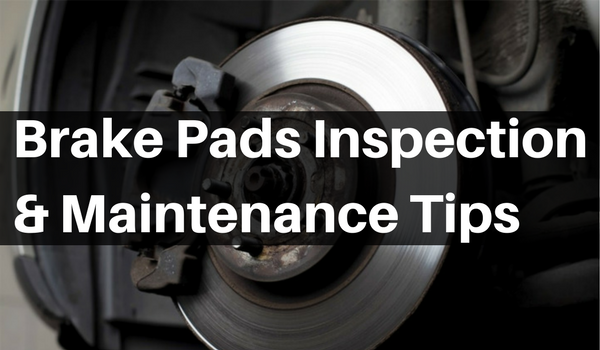Appropriate brake pad inspection and maintenance is not only crucial for your car’s performance and longevity but also for your safety as a passenger or driver as they assist in stopping or slowing down your vehicle. In your regular auto maintenance, it can be possible that the brakes are overlooked which can be fatal.
Follow the below mentioned tips for proper Brake Pads Maintenance and avoid any potential hazard:
When to Check Your Car’s Brake Pads?
There is no definite schedule as to when it would be appropriate to change your car’s brake pads. That means, in determining the amount of deterioration, you may want to consider checking your car’s brake pads on a regular basis. In which manner and where you drive your vehicle determines brake pad’s wear and tear on your car. For instance, when you drive in urban areas, your vehicle’s brake pads could exhaust faster compared to someone who drives on rural roads; that’s because of the constant stopping and starting in the congested city traffic. About every six months, every time when you get your tyres rotated, get your brake pads checked professionally. Alternatively, you can speak to a qualified technician to better understand what’s right for your specific vehicle. Also, you can check your vehicle’s owner manual.
Vital Tips for Checking Your Car’s Brakes
Favourably, brake pads are capable enough to give precise signals that they require a replacement. Some ways to check them are stated below:
Scrutinise the Wheels
Another sign of normal wear is brake dust accumulation in the wheel. The quantity of dust on the wheels normally lessens as the brake pads deteriorate completely. Finding cleaner wheels, after previous brake dust pile up may be a clear indicator signalling the need for brake pads replacement.
Feel Your Steering Wheel & Brake Pedal
A vibration can be felt frequently in the brake pedal at the time of braking, especially when the brake pads are exhausted. At the time of braking, if the steering wheel vibrates then it may also be an indicator of brake pad issues.
Keep Watch over Your Vehicle’s Brake Pad
Through the wheel, the brake pad can be seen in many of the cars. To determine its thickness, look at it. Suppose, it appears to be very thin, less than a ¼ inch then in all likelihood it requires replacement. Some of the brake pads come with a slot in the centre, which acts as a wear pointer; monitor this slot and if it has just vanished, the pad most likely requires replacement.
Listen to Your Vehicle’s Brakes
Your vehicle’s brake pads are fashioned in such a way so that it produces a sound as an early warning signal indicating replacement requirement. This sound will generally be a lot similar to metal scraping in the wheels when the car is in motion and the noise produced by these wear pointers will normally increase when brakes are used repeatedly. Even after the inspection, if your vehicle’s brakes make louder sounds then your vehicle may require different repairs and/or adjustments.
Summing Up
If you aren’t feeling at ease while checking the brake pads, drive your vehicle to a local dealership or repair workshop where a qualified professional can inspect your vehicle’s brake pads. Your car’s brake pads inspection is crucial and replacing exhausted brake pads will not only help to make your car safer but in the long run, it will also aid in saving money by averting preventable accidents.



